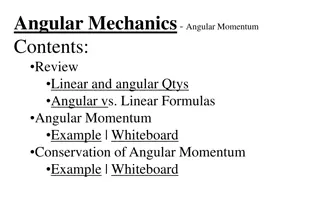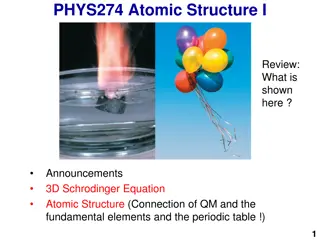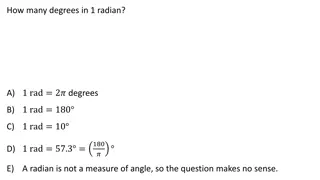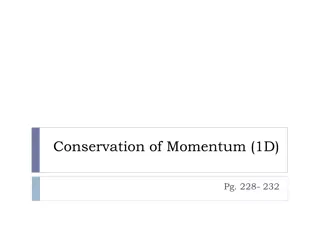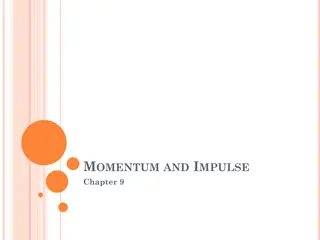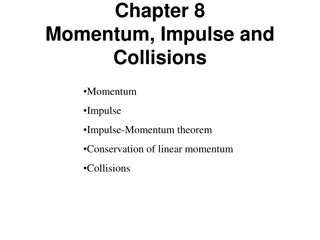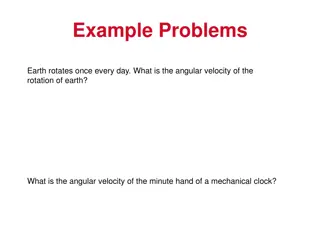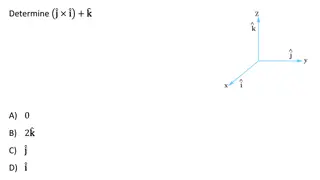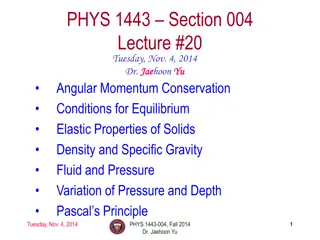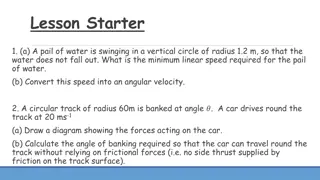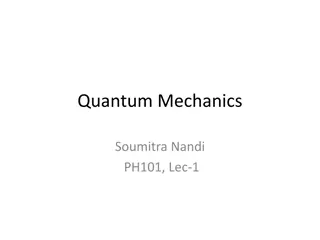Understanding Angular Momentum in Quantum Mechanics
Exploring the concept of total angular momentum in quantum mechanics, which involves the quantization of orbital and spin angular momenta. The coupling of these vectors leads to the formation of total angular momentum, with implications for the behavior of single-electron systems like the hydrogen atom. Spin-orbit coupling and selection rules further shape the energy levels and properties of atoms, highlighting the intricate interplay of various angular momenta in the quantum realm.
Download Presentation

Please find below an Image/Link to download the presentation.
The content on the website is provided AS IS for your information and personal use only. It may not be sold, licensed, or shared on other websites without obtaining consent from the author. Download presentation by click this link. If you encounter any issues during the download, it is possible that the publisher has removed the file from their server.
E N D
Presentation Transcript
Total Angular Momentum Orbital angular momentum Spin angular momentum Total angular momentum L, Lz, S, SzJ and Jzare quantized
Total Angular Momentum If j and mj are quantum numbers for the single electron (hydrogen atom) Quantization of the magnitudes The total angular momentum quantum number for the single electron can only have the values
The Total Angular Momentum Diagram Figure 8.5 When forming the total angular momentum from the orbital and spin angular momenta, the addition must be done vectorially, .
Spin-Orbit Coupling An effect of the spins of the electron and the orbital angular momentum interaction is called spin-orbit coupling. The dipole potential energy The spin magnetic moment . is the magnetic field due to the proton where cos is the angle between
Total Angular Momentum No external magnetic field: Only Jz can be known because the uncertainty principle forbids Jx or Jy from being known at the same time as Jz
Total Angular Momentum With an internal magnetic field: will precess about
Total Angular Momentum Now the selection rules for a single-electron atom become n = anything = 1 mj = 0, 1 j = 0, 1 Hydrogen energy-level diagram for n = 2 and n = 3 with the spin-orbit splitting
The Energy-Level Diagram of Sodium
Many-Electron Atoms Hund s rules: The total spin angular momentum S should be maximized to the extent possible without violating the Pauli exclusion principle. Insofar as rule 1 is not violated, L should also be maximized. For atoms having subshells less than half full, J should be minimized. 1) 2) 3) For labeled two-electron atom There are LS coupling and jj coupling to combine four angular momenta J.
LS Coupling This is used for most atoms when the magnetic field is weak. If two electrons are single subshell, S = 0 or 1 depending on whether the spins are antiparallel or parallel. For given L, there are 2S + 1 values of J For L > S, J goes from L S to L + S For L < S, there are fewer than 2S + 1 possible J values The value of 2S + 1 is the multiplicity of the state
LS Coupling The notation for a single-electron atom becomes n2S+1LJ The letters and numbers are called spectroscopic symbols. There are singlet states (S = 0) and triplet states (S = 1) for two electrons.
Energy level diagram of Mg LS Coupling There are separated energy levels according to whether they are S = 0 or 1 Allowed transitions must have S = 0 No allowed (forbidden) transitions are possible between singlet and triplet states with much lower probability This is a two-electron atom with one electron in the 3s and the other excited into the nl subshell
LS Coupling The allowed transitions for the LS coupling scheme are L = 1 S = 0 J = 0, 1 (J = 0 J = 0 is forbidden) A magnesium atom excited to the 3s3p triplet state has no lower triplet state to which it can decay. It is called metastable, because it lives for such a long time on the atomic scale.
jj Coupling It is for the heavier elements, where the nuclear charge causes the spin- orbit interactions to be as strong as the force between the individual and . The coupling order becomes


